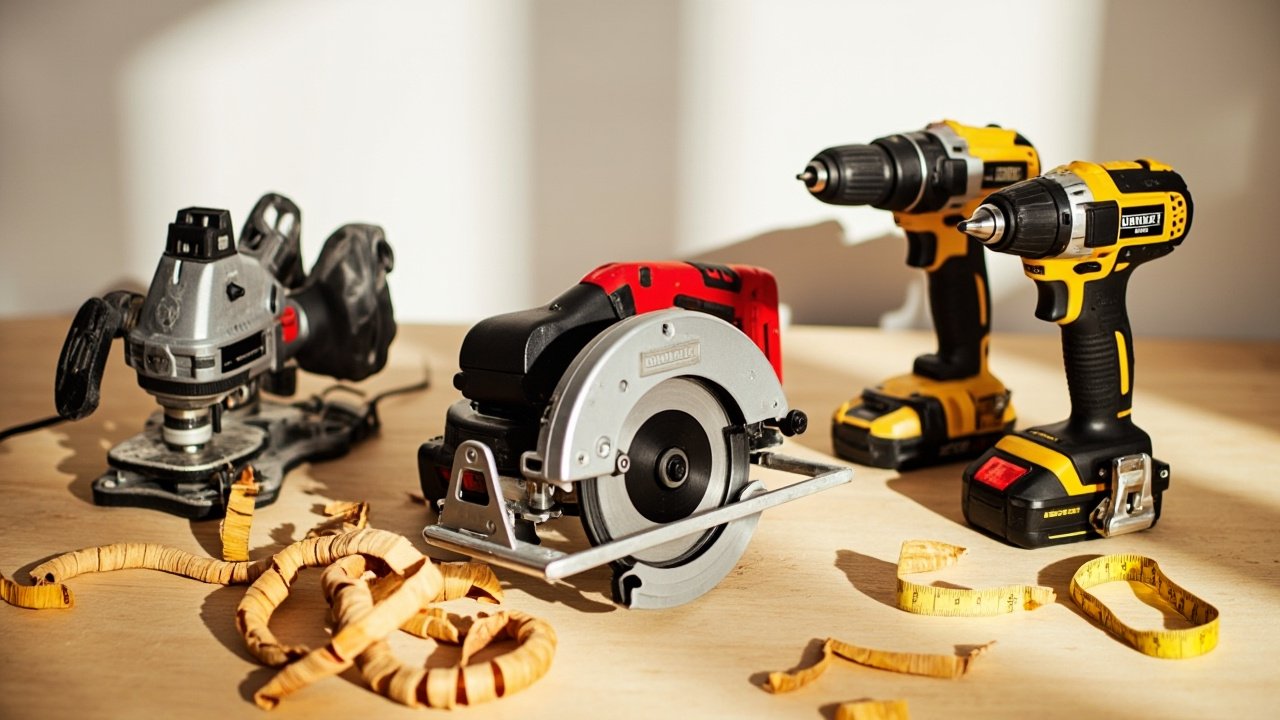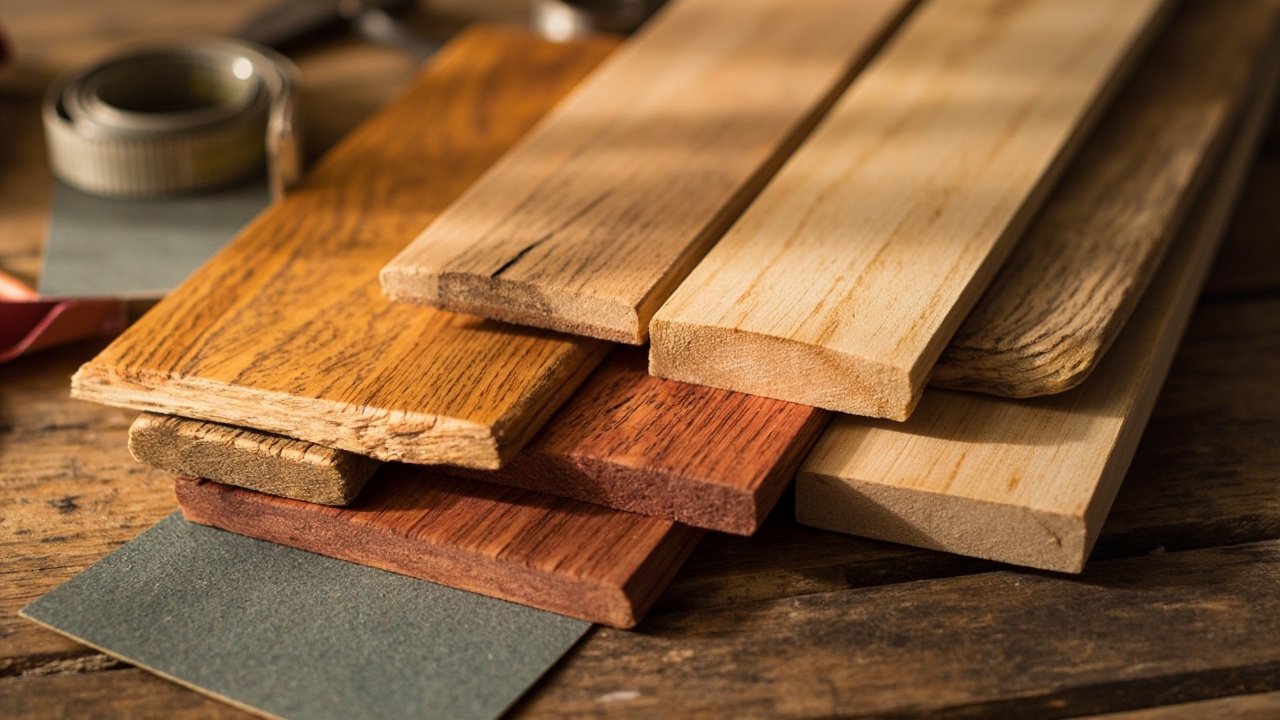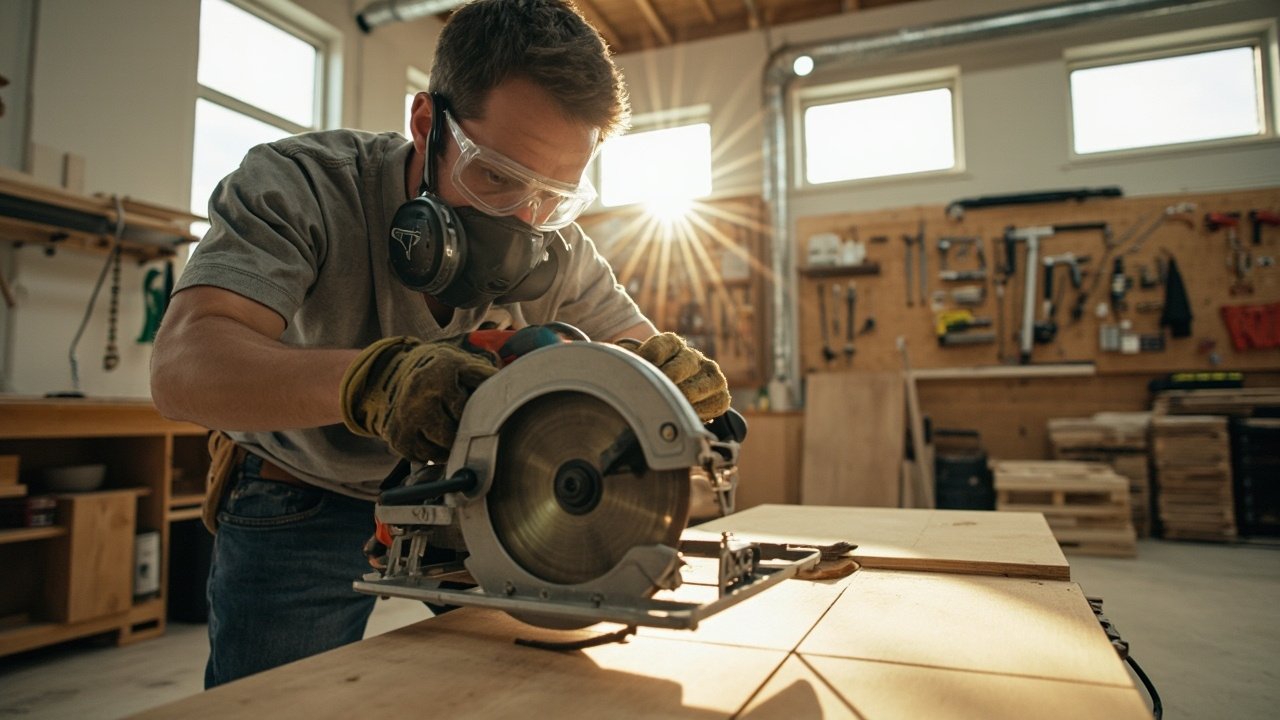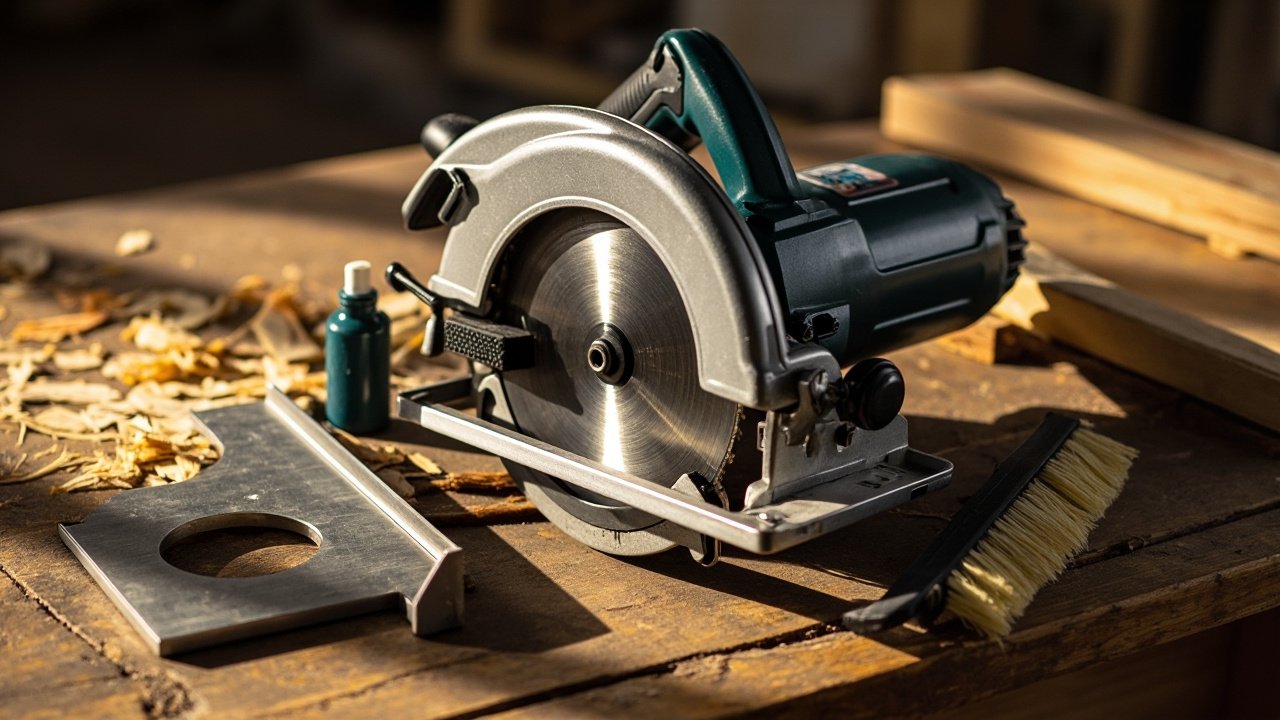When I first started woodworking, I quickly realized that having the right tools makes all the difference. Whether you’re building a simple shelf or crafting a more elaborate piece, the right power tools can save time, effort, and even money in the long run. But with so many options on the market, how do you know which are the best power tools to invest in for woodworking? This question led me to research, test, and learn a lot about the subject. Today, I want to share what I’ve discovered in a simple and practical way so you can make smart choices.
Table of Contents
Table of Contents
Why Invest in Quality Power Tools?
Before diving into specific tools, it’s important to understand why investing in quality equipment is worth it. Imagine you’re building a bookshelf. With a poor-quality circular saw, your cuts might end up uneven, ruining the look of the piece and making assembly difficult. With a good tool, the work flows better, the results are more professional, and you avoid unnecessary physical strain.
Additionally, quality tools last longer. This means that instead of spending money replacing broken or inefficient equipment, you can invest in something that will last for years or even decades. For those living in humid areas like Florida, where moisture can affect tool performance, or in Arizona, where extreme heat can wear down fragile materials, durability is even more critical.
Another crucial point is safety. Low-quality tools can have defects that put your physical safety at risk, such as blades that come loose or motors that overheat. On the other hand, tools from reputable brands like DeWalt, Bosch, and Makita undergo rigorous quality testing and meet international safety standards.
The Essential Tools for Woodworking
Now that you understand the importance of investing in good tools, let’s talk about the best power tools to invest in for woodworking. These are the ones I consider indispensable for anyone starting out or looking to improve their projects.
1. Circular Saw: The Heart of the Workshop
The circular saw is undoubtedly one of the most versatile and useful tools for any woodworker. It’s used for cutting wood of different thicknesses and sizes and is essential for projects like tables, shelves, and even decks. If you live in states like Texas or California, where the climate can vary significantly, a high-quality circular saw will help you handle different types of wood, from pine to harder woods like oak.
Important Details:
- Power: For home projects, a saw with a 10-15 amp motor is sufficient. For heavier work, like cutting hardwoods, opt for more powerful models.
- Blades: Choose high-quality blades, like those from Diablo, sold at Home Depot. They ensure cleaner cuts and last longer.
- Adjustments: Models with depth and angle adjustments, like those from DeWalt, allow for precise and versatile cuts.
Tip: If you work outdoors, consider a cordless circular saw, like those from Milwaukee, which offer mobility and convenience.
2. Orbital Sander: For a Perfect Finish
Nothing ruins a project faster than a poor finish. The orbital sander is the right tool to ensure your pieces are smooth and ready for paint or varnish. In regions like the Midwest, where harsh winters can leave wood rougher, a good sander is even more important.
Important Details:
- Sandpaper Grit: Orbital sanders use sandpaper of different grits. Start with 80, 120, and 220 grit to cover everything from rough sanding to final finishing.
- Variable Speed: Models with speed control, like those from Bosch, allow you to adapt the sander to the type of wood and stage of work.
- Dust Collection: Opt for sanders with dust collection systems, like those from Makita, to keep your workspace cleaner and healthier.
Tip: For larger projects, like hardwood floors, consider a belt sander, which covers more area in less time.
3. Router: For Details and Professional Finishes
If you want to add elegant details to your pieces, like rounded edges or precise joints, the router is the right tool. It allows you to create custom designs and is widely used in Amish furniture, famous in Pennsylvania for its quality and durability.
Important Details:
- Router Bits: There are bits for different purposes, like chamfering edges, creating joints, or making moldings. Start with a basic kit, like those from Freud, which includes several options.
- Depth Control: A router with precise depth adjustment, like those from Porter-Cable, ensures safer and more accurate work.
- Fixed Base vs. Plunge Base: For beginners, a fixed base router is easier to use. A plunge base is ideal for more versatile projects.
Tip: Use a router table for projects that require repetitive and precise cuts, like moldings or slats.
4. Drill/Driver: For Quick and Secure Assembly
No workshop is complete without a good drill/driver. It’s used for both drilling holes and driving screws, making it essential for any woodworking project. In states like Georgia, where humidity can affect wood, a powerful drill ensures screws stay firmly in place.
Important Details:
- Adjustable Torque: Models with torque control, like those from DeWalt, prevent you from damaging the wood or stripping screws.
- Battery: Choose drills with lithium-ion batteries, which are lighter and last longer. Brands like Ryobi offer kits with two batteries, perfect for longer projects.
- Speed: Drills with two-speed settings allow you to adapt the tool for different tasks, from small holes to large screws.
Tip: For projects that require a lot of screws, like furniture assembly, consider an impact driver, which makes the job easier.
5. Jigsaw: For Precise and Detailed Cuts
For more delicate cuts, like curves or small pieces, the jigsaw is the ideal tool. It offers greater control and precision, making it especially useful for coastal design projects, which are popular in California.
Important Details:
- Blades: Choose blades specific to the type of cut you’re making. For softwood, use blades with wide teeth; for hardwood, opt for finer teeth.
- Variable Speed: Models with speed control, like those from Dremel, allow you to adapt the jigsaw to the material and level of detail required.
- Ergonomic Handle: A comfortable, non-slip handle is essential for long jobs, reducing fatigue and preventing accidents.
Tip: Use a cutting bench to ensure pieces stay steady during work, especially for curved cuts.
How to Choose the Right Tools for You
Now that you know the essential tools, how do you choose the best ones for your needs? Here are some practical tips:
- Think about your projects: If you’re building large furniture, invest in a powerful circular saw. If you prefer smaller, detailed projects, focus on a router and jigsaw.
- Consider your region’s climate: In humid areas like Florida, prioritize tools with rust protection. In hot regions like Arizona, choose models that won’t overheat.
- Check warranties and support: Brands like DeWalt and Bosch offer good warranties and technical support, which can be a deciding factor.
- Start with the basics: If you’re just starting out, you don’t need to buy everything at once. Begin with a circular saw and drill/driver, then expand your collection over time.
- Test before buying: If possible, visit a store like Lowe’s or Home Depot to test tools before purchasing. This helps you choose the most comfortable model for you.
Tool Care and Maintenance
Having the right tools is important, but taking care of them is essential. Here are some tips to keep your tools in good condition:
- Regular cleaning: After each use, remove sawdust and debris to prevent wear. Use a brush or compressed air to clean hard-to-reach areas.
- Proper storage: Store tools in a dry, protected place, especially in humid regions. Toolboxes or cabinets with humidity control are ideal.
- Preventive maintenance: Regularly check cords, blades, and batteries, and make adjustments as needed. Lubricate moving parts and replace worn components.
- Safety: Always use protective equipment like goggles and gloves, and follow the manufacturer’s instructions to avoid accidents.
Conclusion: Quality Tools Are Worth the Investment
Choosing the best power tools to invest in for woodworking might seem challenging at first, but with the right information, you can make choices that will simplify your work and deliver incredible results. Remember that each tool has a specific purpose, and investing in quality will save you time, money, and frustration in the long run.
If you live in the U.S., don’t forget to consider the specifics of your region, such as climate and material availability. And, of course, share your experiences in the comments! Which tools do you already use, and which are you thinking of buying? Let’s exchange ideas!
FAQs: Your Woodworking Power Tools Questions Answered
1. What are the most essential power tools for a beginner woodworker?
Answer:
For beginners, these 5 power tools cover 90% of basic projects:
- Circular saw (for straight cuts)
- Drill/driver (for holes and assembly)
- Orbital sander (for smooth finishes)
- Jigsaw (for curved cuts)
- Router (for edges and joints)
Pro Tip: Start with corded versions – they’re more affordable and powerful for beginners. Brands like DeWalt and Ryobi offer great starter kits at Home Depot.
2. What’s better for woodworking: corded or cordless power tools?
Answer:
It depends on your workspace and projects:
| Feature | Corded Tools | Cordless Tools |
|---|---|---|
| Power | Consistent high power | Varies by battery |
| Mobility | Limited by cord | Complete freedom |
| Best For | Workshop projects | Job sites/outdoor work |
| Maintenance | Less upkeep | Battery care needed |
For most home woodworkers: Use corded tools for stationary tools (table saws) and cordless for handheld tools (drills).
3. How much should I budget for quality woodworking power tools?
Answer:
Here’s a realistic breakdown:
- Basic starter set: $300-$500
(Circular saw, drill, sander from Ryobi or Skil) - Intermediate setup: $800-$1,200
(Add router, jigsaw, and upgrades to DeWalt/Makita) - Professional-grade: $2,000+
(Festool, Milwaukee, with dust collection systems)
Money-saving tip: Watch for Black Friday deals at Lowe’s or buy refurbished tools from manufacturer websites.
4. What power tool brands offer the best value for money?
Answer:
Based on 2024 tool reviews and user reports:
Best Budget:
- Ryobi (Great for beginners)
- Skil (Reliable mid-range)
Best Overall Value:
- DeWalt (Durable with good warranty)
- Makita (Excellent battery systems)
Premium Professional:
- Festool (Top precision)
- Milwaukee (Heavy-duty performance)
Regional note: In humid states like Florida, prioritize brands with better rust protection like DeWalt’s stainless steel components.
5. How do I maintain my power tools to make them last longer?
Answer:
Follow this maintenance schedule:
After Each Use:
✔ Blow out dust with compressed air
✔ Wipe down with dry cloth
✔ Check for loose parts
Monthly:
✔ Lubricate moving parts with 3-in-1 oil
✔ Inspect cords for damage
✔ Clean battery contacts (for cordless)
Seasonal:
✔ Replace worn brushes (in motors)
✔ Sharpen or replace blades
✔ Check carbon buildup in routers
Pro maintenance hack: Store tools with silica gel packs in humid climates to prevent rust.
6. What safety gear do I need when using woodworking power tools?
Answer:
These 7 safety items are non-negotiable:
- ANSI-approved safety glasses (Z87.1 rated)
- Hearing protection (30dB+ reduction)
- Dust mask/respirator (N95 minimum)
- Work gloves (for material handling only – never while operating tools)
- Steel-toe boots (when working with heavy materials)
- Push sticks (for table saws)
- Fire extinguisher (ABC-rated, within reach)
Critical reminder: Never remove safety guards from tools – they prevent 90% of workshop accidents.
7. Where can I find woodworking project plans for beginners?
Answer:
Top free and paid resources:
Free Options:
- Ana White (Beginner-friendly furniture plans)
- Woodsmith Plans (Detailed PDFs)
- Lowe’s/Home Depot project guides
Paid Options:
- The Wood Whisperer Guild ($)
- Popular Woodworking Magazine Plans
- Etsy digital downloads
Local suggestion: Check your state’s woodworker associations (like the Florida Woodworking Guild) for regional project ideas using local wood types.
8. How do I choose the right saw blades and router bits?
Answer:
Use this quick reference:
For Circular Saws:
- 24-tooth: Fast, rough cuts
- 40-tooth: General purpose
- 80-tooth: Fine finish cuts
For Routers:
- Straight bit: Grooves/dados
- Round-over bit: Smooth edges
- Dovetail bit: Strong joints
Pro selection tip: Match the blade/bit material to your project – carbide-tipped lasts 10x longer than steel when working with hardwoods.
9. What’s the best way to organize a small woodworking shop?
Answer:
Maximize space with these solutions:
Wall Storage:
- French cleat systems
- Pegboard tool organizers
Mobile Bases:
- Convert stationary tools to wheeled
- Rolling tool cabinets
Vertical Space:
- Ceiling-mounted lumber racks
- Fold-down workbenches
Space-saving hack: In garage shops (common in Texas/Arizona), use retractable extension cords and overhead dust collection to keep floors clear.
10. How can I reduce sawdust in my workshop?
Answer:
Implement this 3-layer defense:
- Source Capture:
- Attach shop vac to tools
- Use dust collector ports
- Air Filtration:
- Hang air filter units
- Open windows with fan exhaust
- Personal Protection:
- Wear respirator
- Change HVAC filters often
For humid climates: Add a dehumidifier to prevent damp sawdust buildup that can lead to mold (common in Southern states).
Key Points Covered
- The importance of investing in quality tools.
- The 5 essential power tools for woodworking.
- Tips for choosing the right tools for your projects.
- Care and maintenance to extend the life of your tools.






